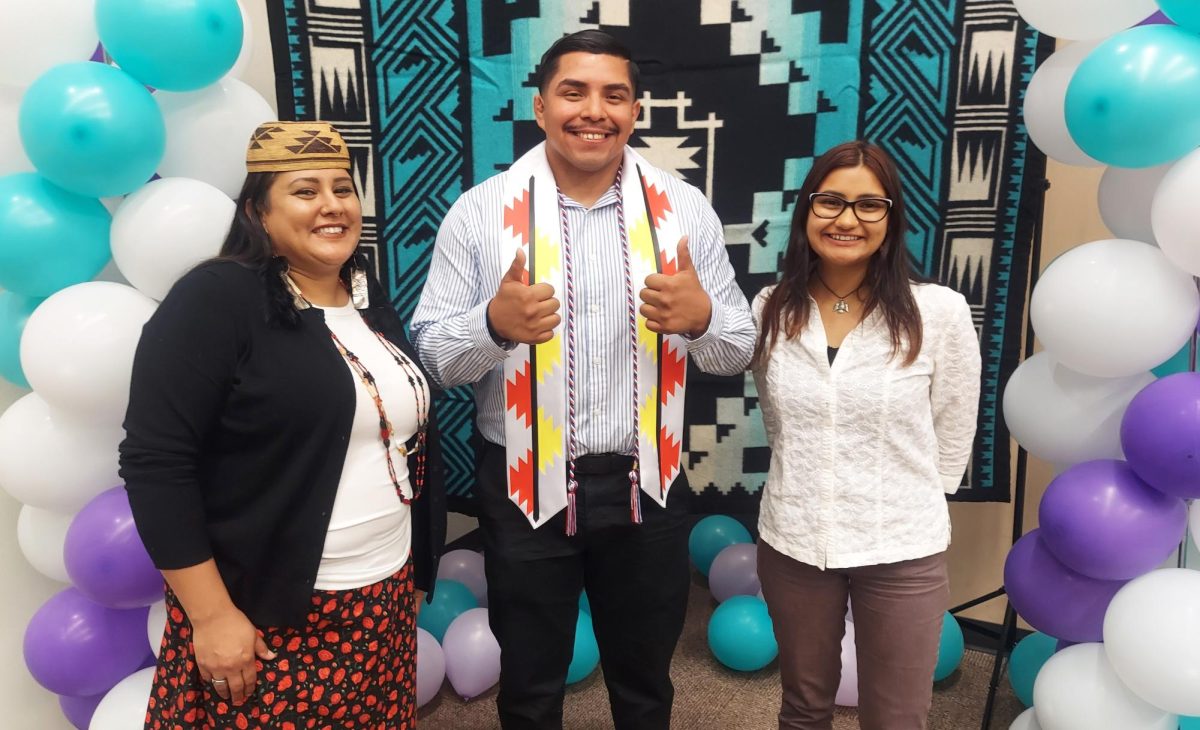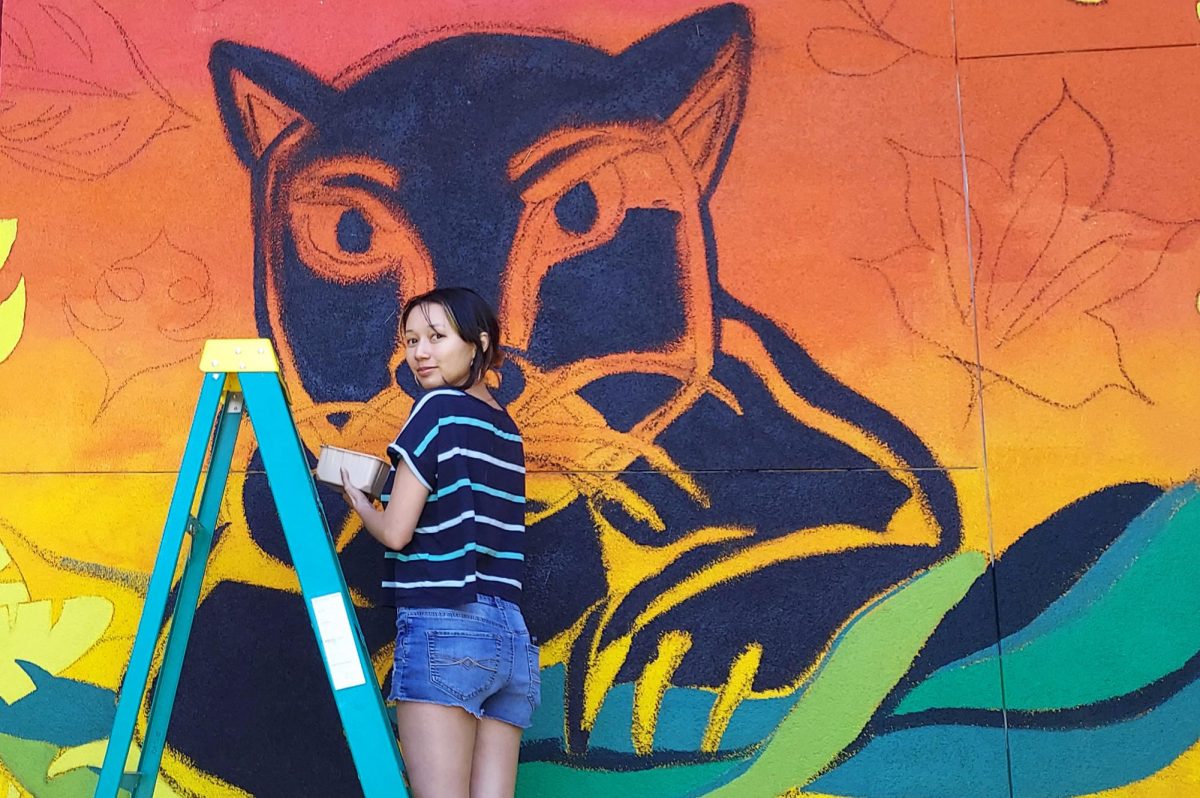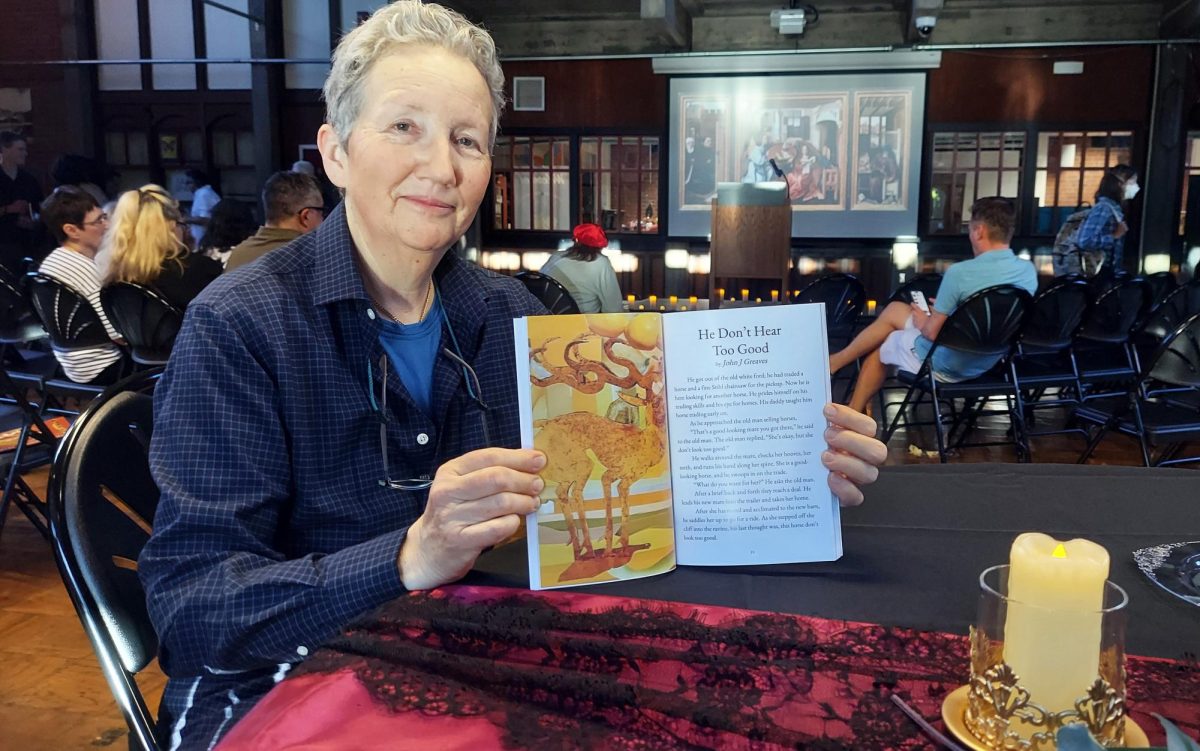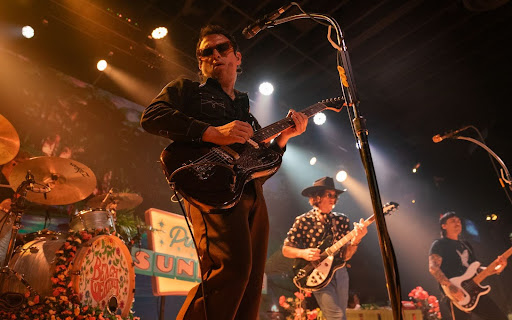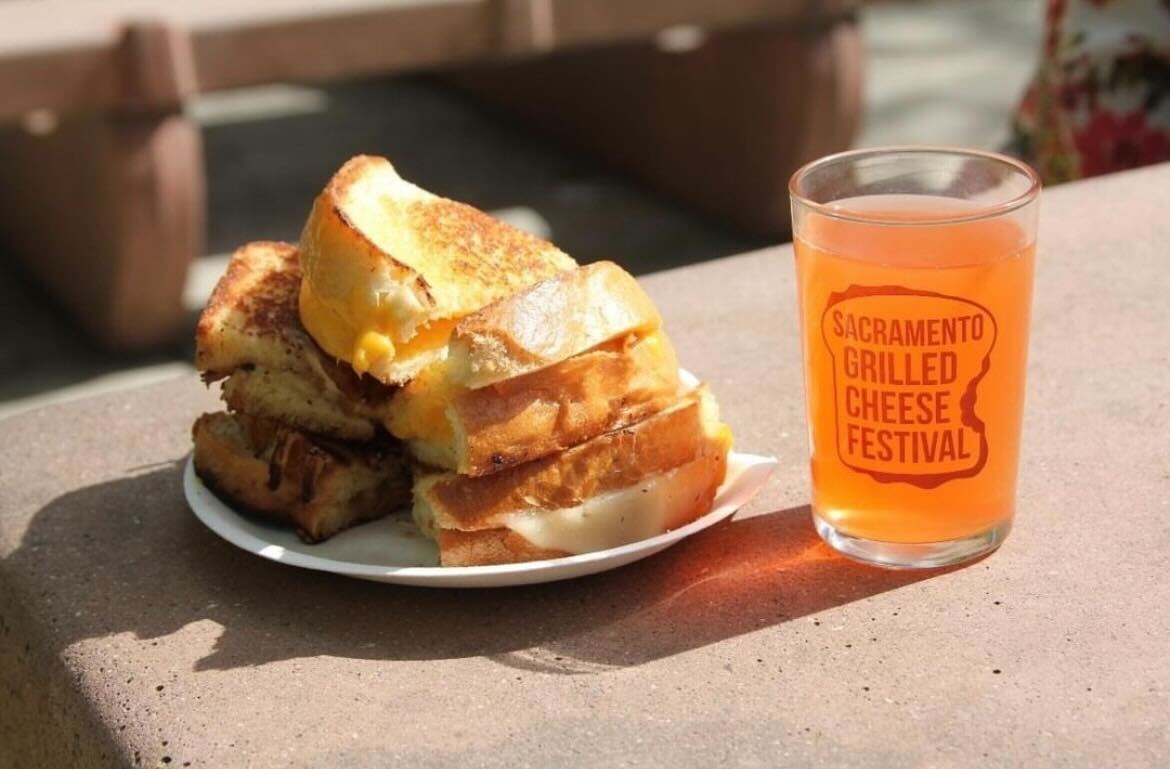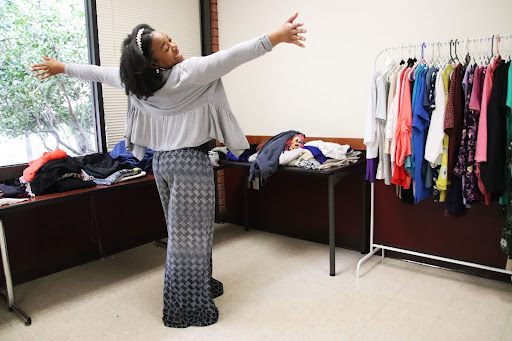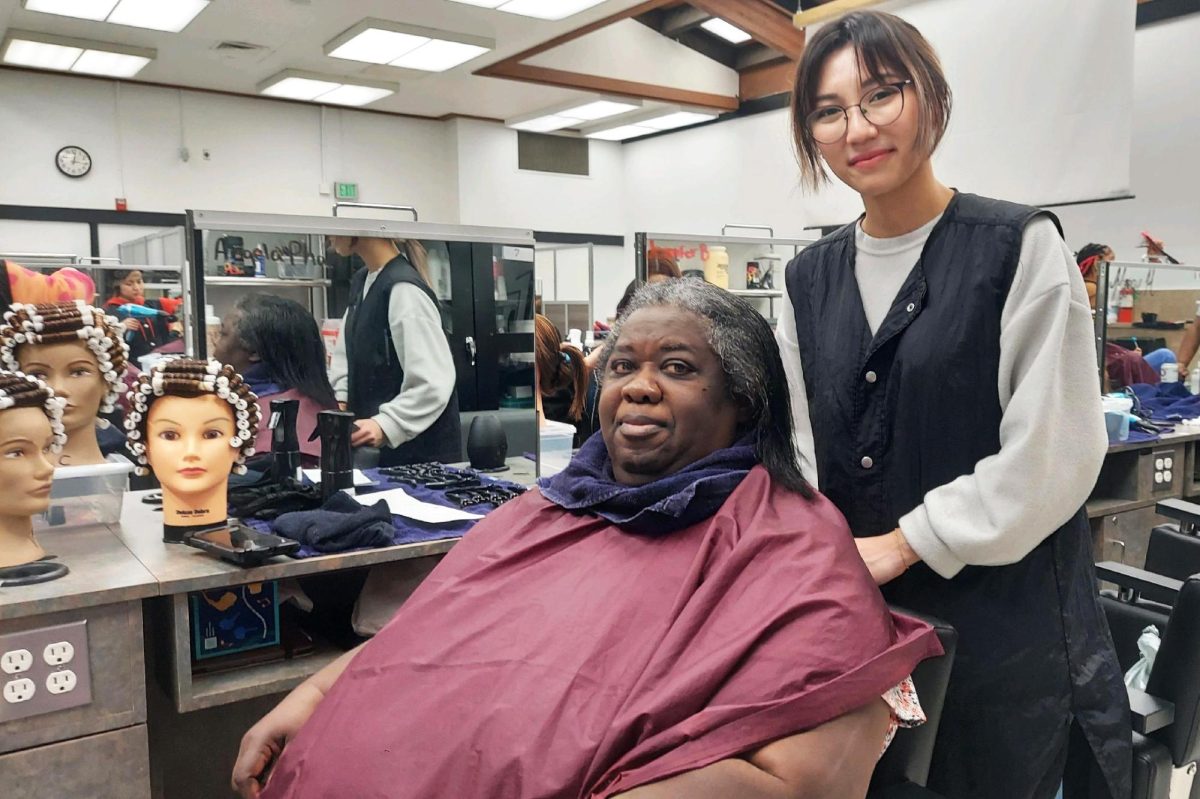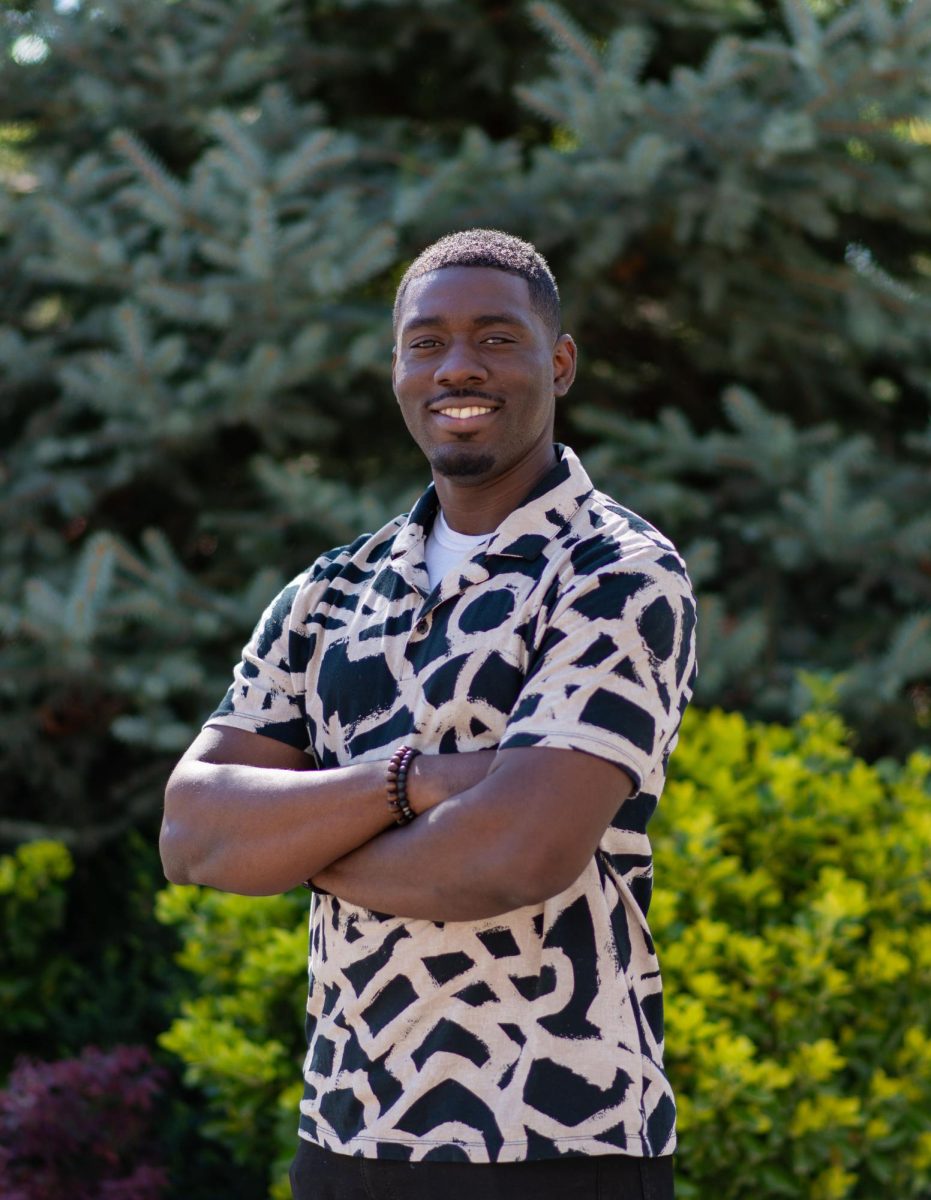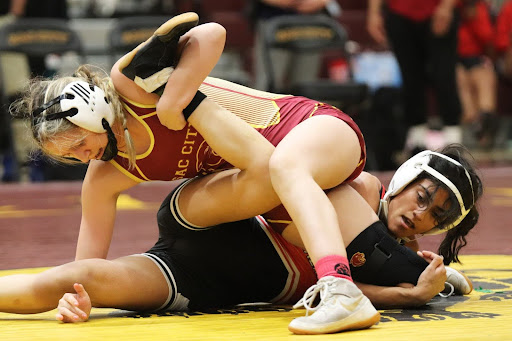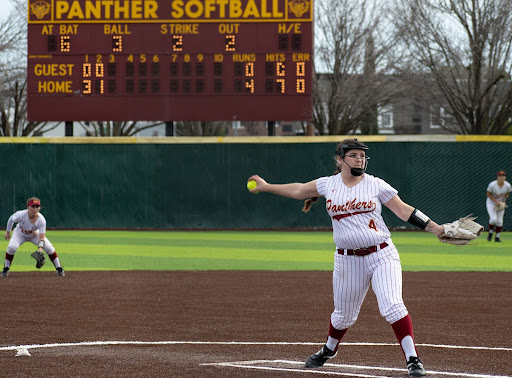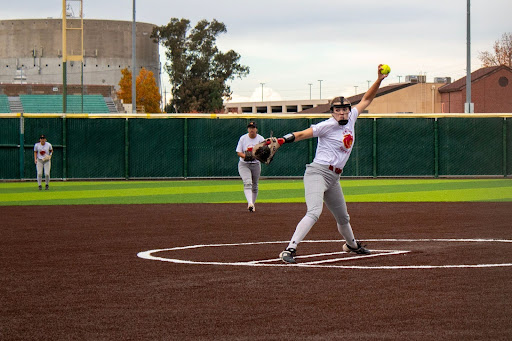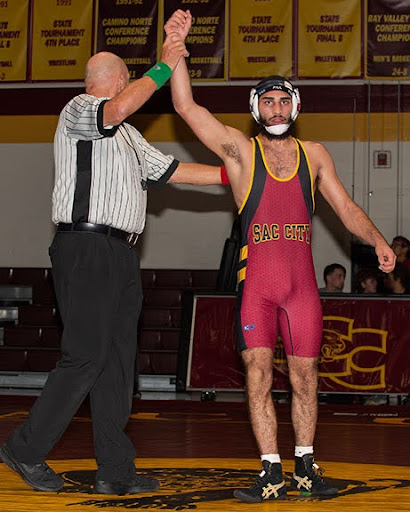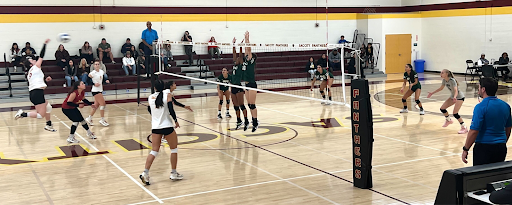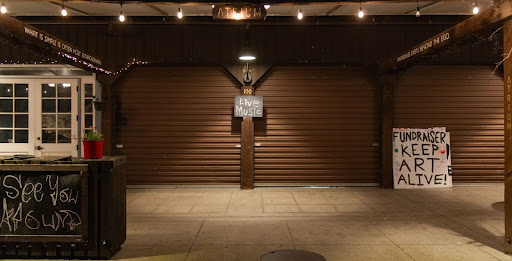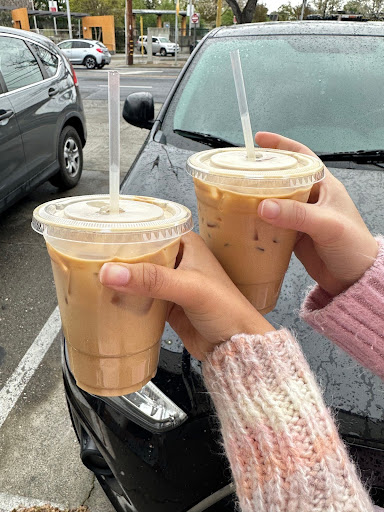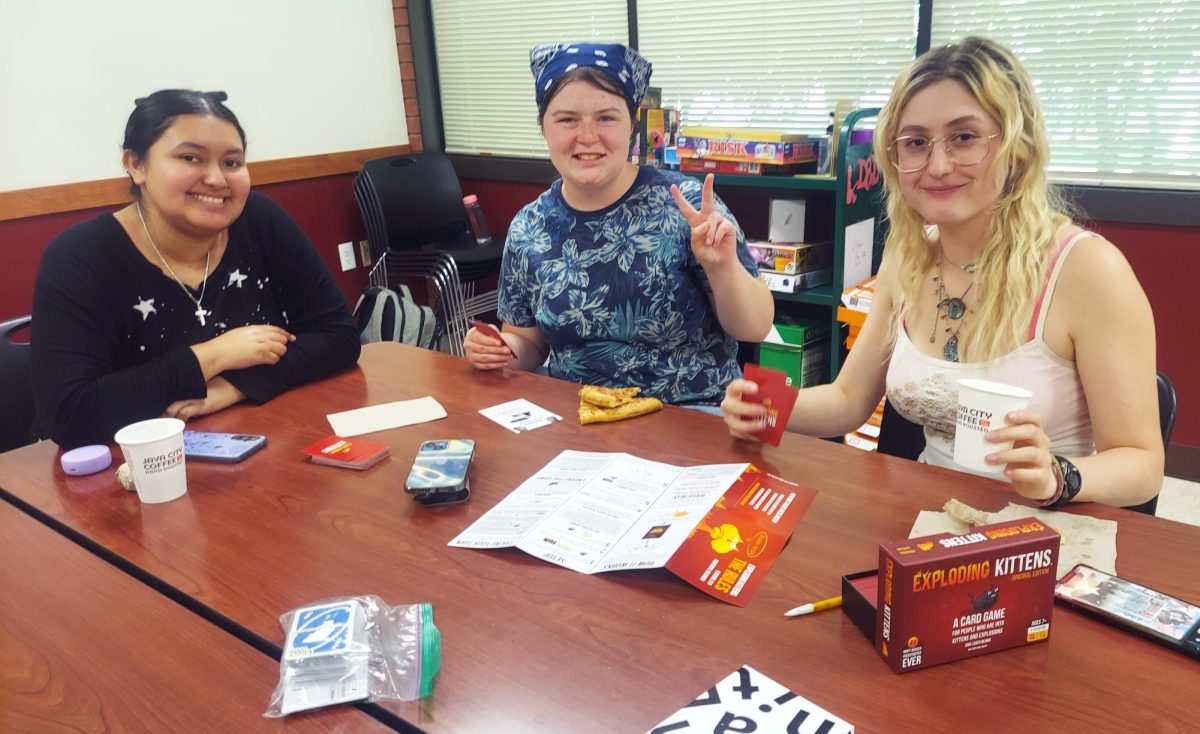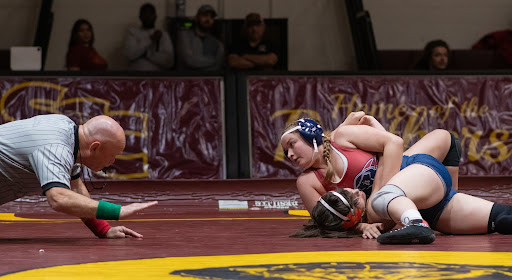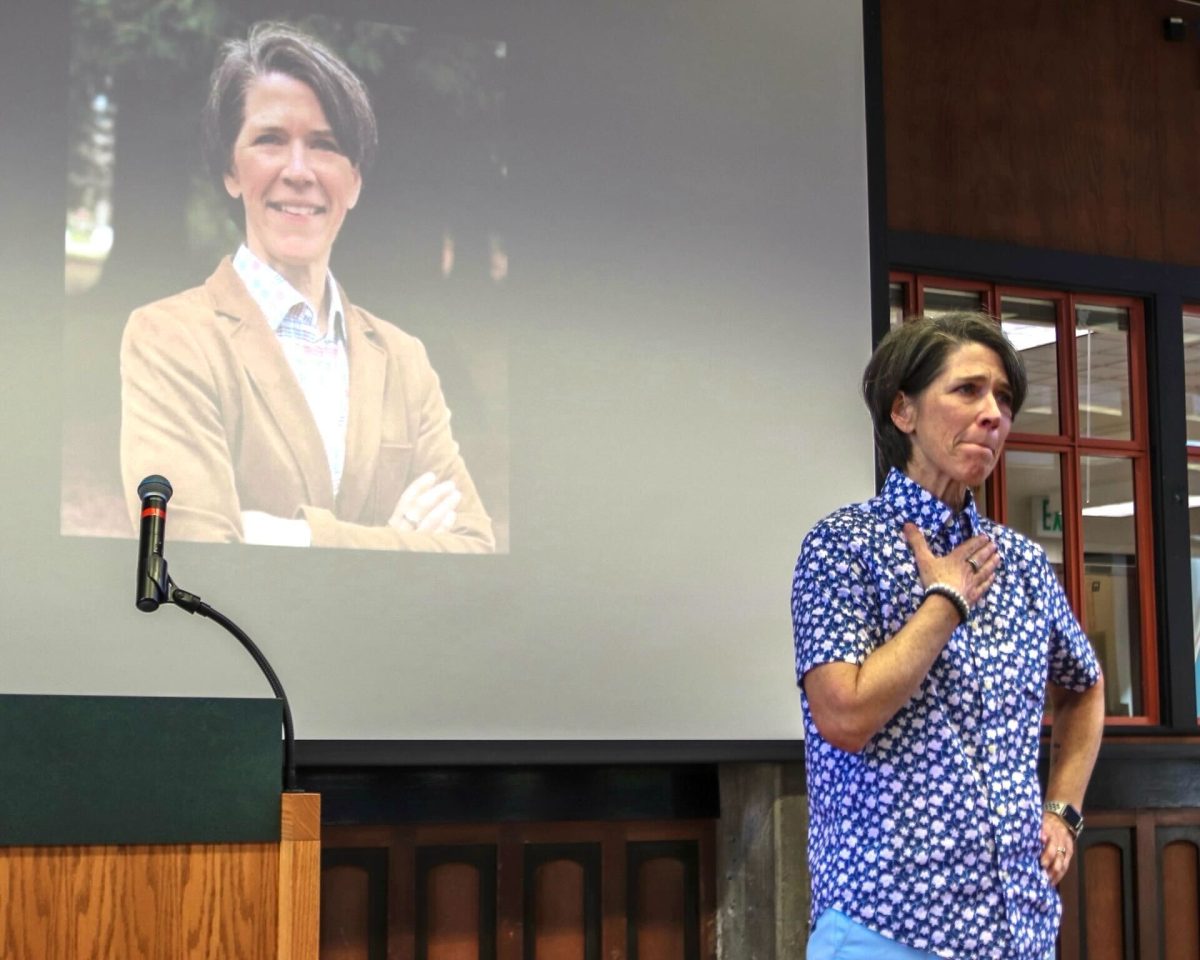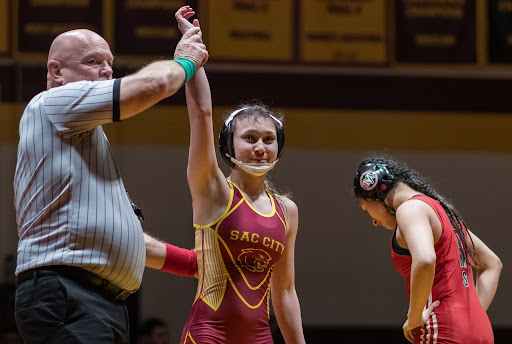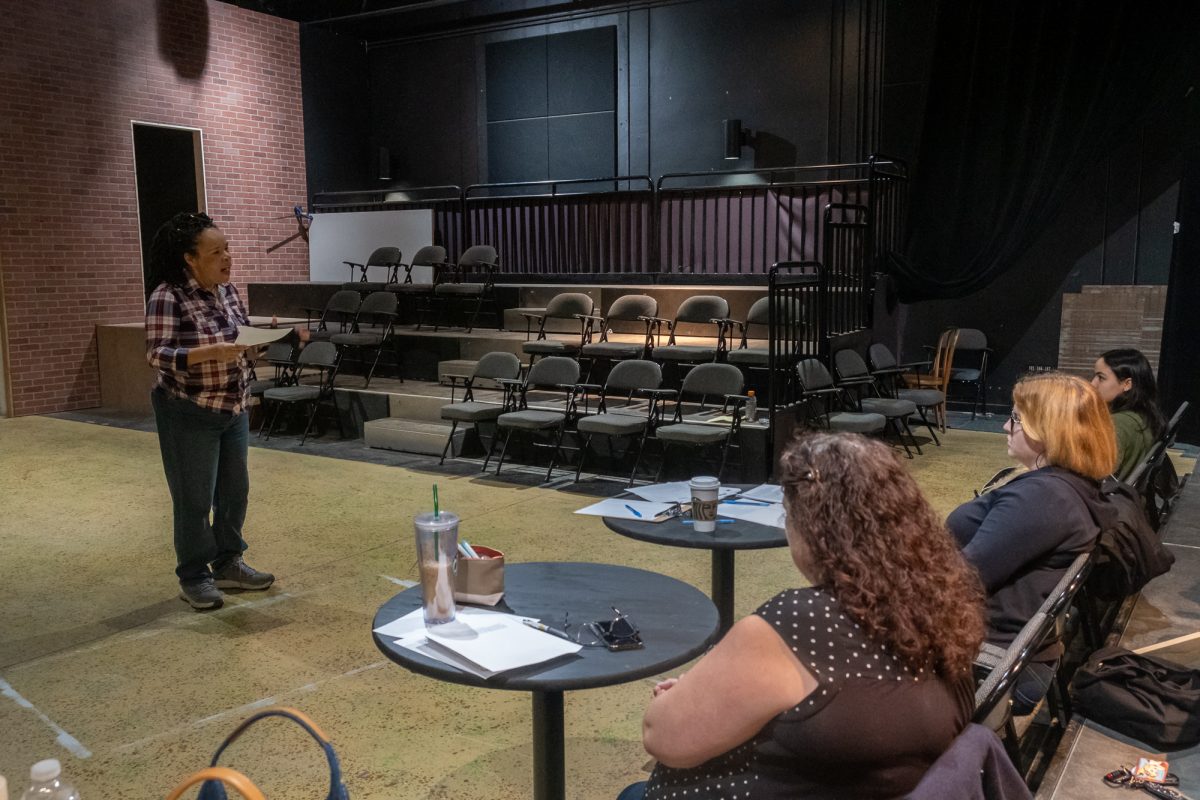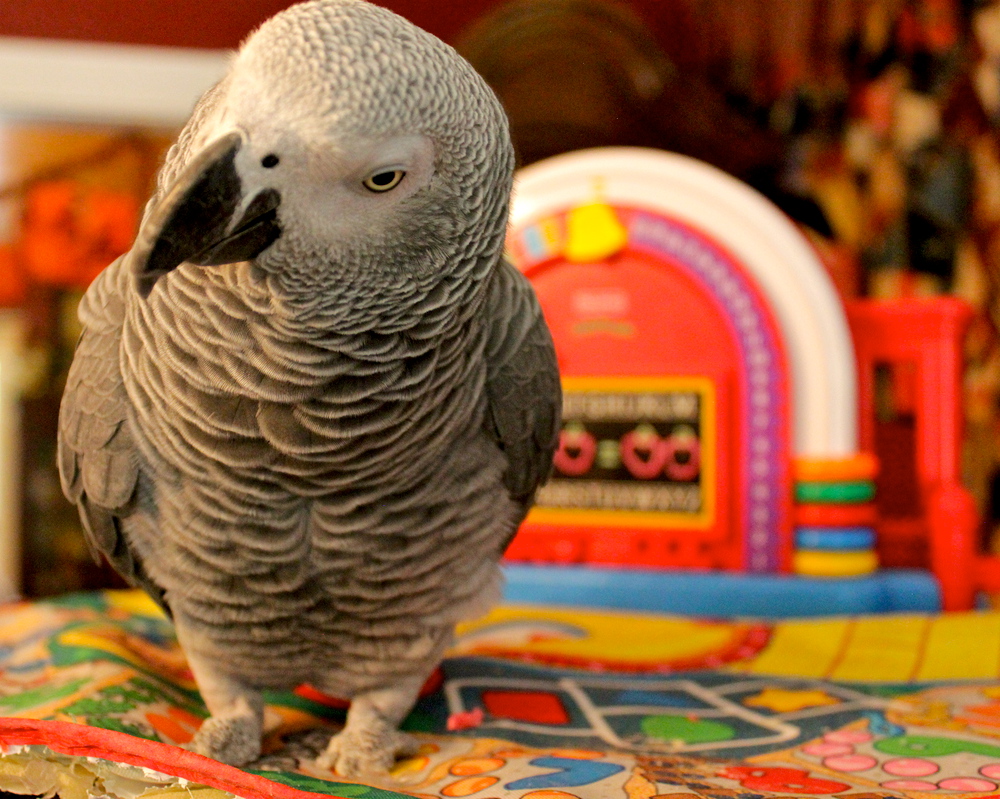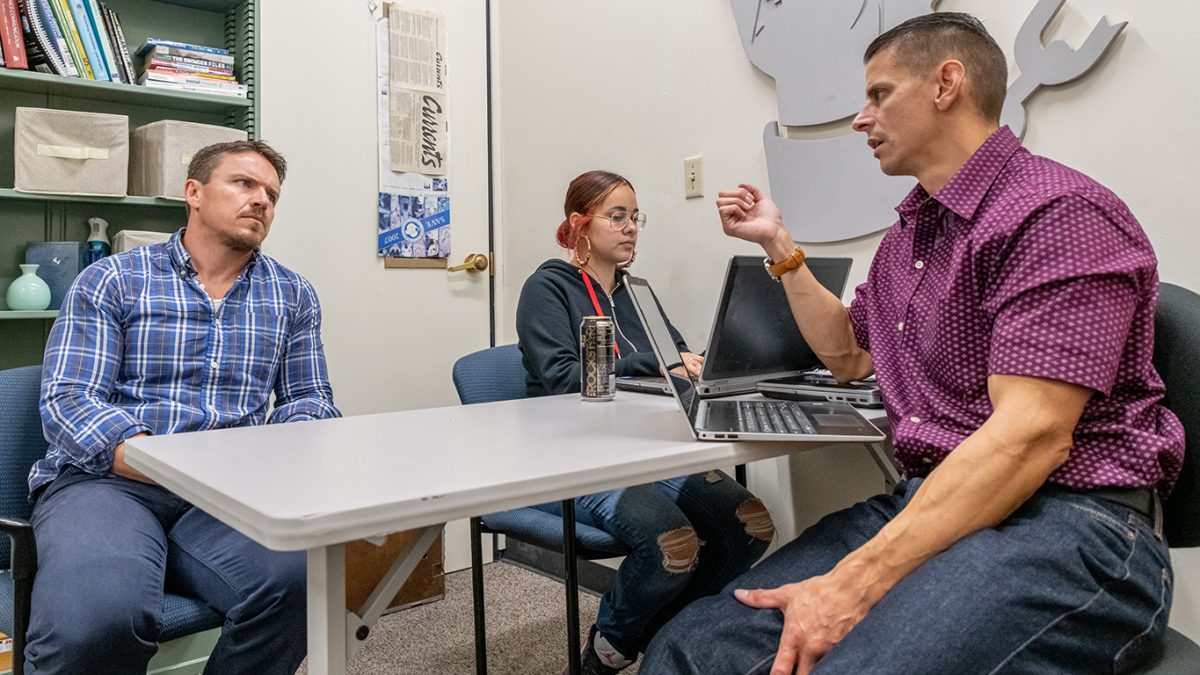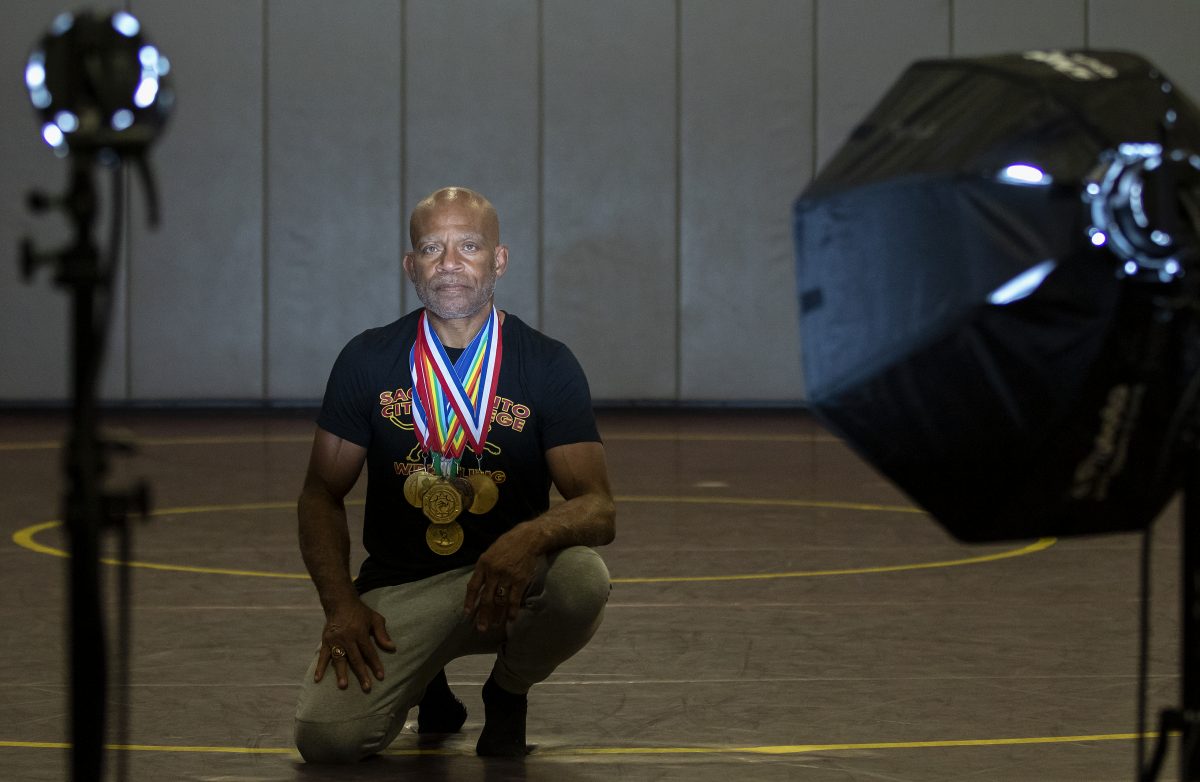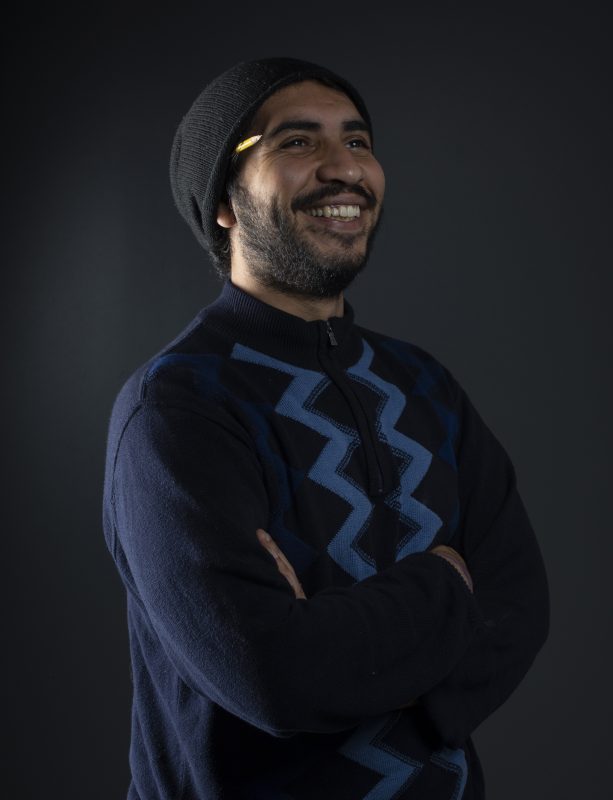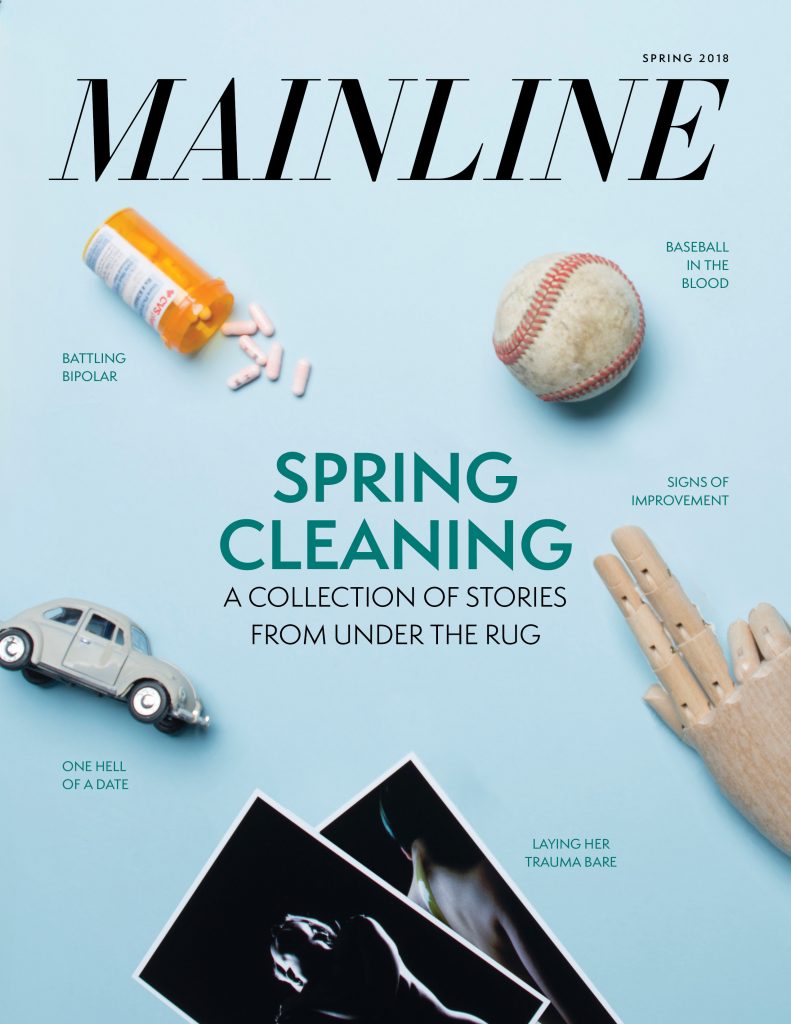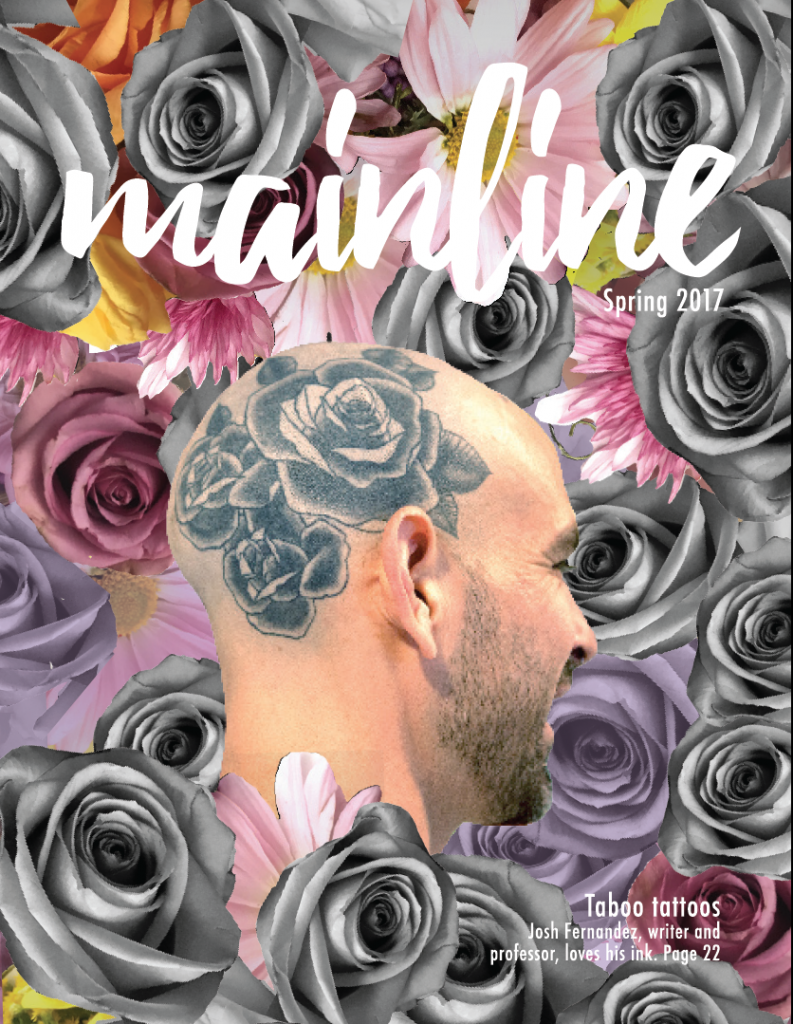Robin Fritz | Contributing Writer
From budgies to macaws: Mickaboo Companion Bird Rescue
From the sidewalk, the house is quietly unassuming with its neutral shades and well-manicured vegetation. All seems peaceful on this hot afternoon — there is no sign that creatures capable of vocalizing at over 100 decibels might live here. Closer to the door, a few bird calls can be heard. Then, when Theresa Tomka opens the door with a creamy-white crested parrot in her arms, the volume immediately increases, evoking the music of a rainforest. She raises her voice to introduce Jerry, the fluffy-looking, Chihuahua-sized Goffins cockatoo she’s holding.
Suddenly, an earsplitting shriek bursts from a doorway to the right. Inside a tall, white cage is a parrot with a sunset-orange chest, iridescent green and blue wings, and the bare white face that marks most macaw species. Despite her big voice and even bigger beak, she climbs up to the highest perch and peers nervously from behind her hanging toys.
“That’s Catrina,” Theresa explains. “She’s known as a Catalina, or rainbow, macaw — a hybrid between a scarlet and a blue-and-gold. She had been adopted through Mickaboo, but it didn’t work out, so she’s been with me for about three years now.”
Theresa, caretaker of this noisy menagerie, is a volunteer with Mickaboo Companion Bird Rescue. She attended Sacramento City College in the 1980s, majoring in fine arts and printing technology.
Her deep affinity for parrots began about nine years ago when her daughter found a stray cockatiel and gave him to Theresa. Her granddaughters named him David. Theresa went to a local bird shop to get a companion for him, and continued to shop there regularly for supplies.
“The store allowed people to hold their birds and I, of course, would hold all of them,” says Theresa.
I know just what she means —as a bird lover myself, I’ve spent hours at a time there.
Over the next seven months, Theresa recalls, she “fell in love with Lelani, a young umbrella cockatoo,” a large species known for its high-maintenance personalities and high-decibel voices. “She and I had become so bonded that I had to have her.”
About two years later, while searching for bird care information online, she came across an ad for a local adoption fair hosted by Mickaboo. She’d never heard of parrot rescue before and decided to attend. There, she learned about the many birds in need of good homes.
“And the rest is history,” she says. “I’ve been volunteering with them for about seven years now.”
Theresa currently cares for 25 parrots — including David, that first cockatiel — as well as eight cats and one recently rescued pigeon.
In her front room, Ricky, the African grey parrot, balances calmly on his cage top. Head tilted, he gazes about with a heavy-lidded, world-wise expression, then preens his wing feathers. He has no toes — he stands atop his cage on just the “palms” of his feet.
“It was probably done by his siblings when they were still in the nestbox,” says Theresa. “That happens sometimes with captive breeding. He says hundreds of words and phrases and uses them contextually. He understands a lot of the things I say to him, too. If I see him flying over and walking around on the other cages, I just tell him, ‘Ricky, go back to your cage,’ and he flies right back over.”
Theresa walks into the small room near the front door that holds Catrina’s cage. “Let’s see if she’ll come out to say hi.” Pulling on a tough-looking, elbow-length black rubber glove, Theresa says, “She’s very loving, but challenging, too. She’s been through several homes — still learning to trust people again.”
As she drapes two thick towels over the rubber glove, she speaks cajolingly to Catrina. “Do you wanna come out? What do you think? How about a cookie? Will you come out for a cookie?” The “cookie” is a baked bird treat; sugar isn’t good for birds, and chocolate is toxic to them.
Catrina climbs down the far side of the cage and reaches toward the door with her beak, angling to get her “cookie” without having to leave the safety of her cage.
For Theresa, caring for animals with the equivalent of can-openers on their faces is a double-edged sword. She is a cancer patient, and the treatments have weakened her immune system.
On one hand, being bitten is more dangerous to her because of possible bacteria transfer, and she has to take extra precautions against bites — hence that heavy glove with the double layer of towels. But on the other hand, she says that the birds, along with her other pets, are extremely beneficial to her well-being.
“Oh, yes, they help with everything — emotionally, physically,” she says, waving a hand to indicate all aspects of her life. “They give me the strength I need to live.” She says that she would never give them up, as long as she can still care for them. “When I’m no longer able, I plan on having a care person live here to help with me and my pets.”
Theresa hopes to plan trips to Costa Rica and Nicaragua to see parrots in their native environments. “In Costa Rica they have a parrot cruise that takes you around where you can see the wild flocks,” she says, lighting up at the thought of it.
Mickaboo Companion Bird Rescue was founded in San Jose in 1996 by Tammy Azzaro, along with a friend and fellow bird owner. It began as Mickaboo Cockatiel Rescue — Tammy’s cockatiel was named Mick, and her friend’s was Aboo. Those two small birds inspired the women to create a volunteer network to spread information about what pet birds need to be happy and healthy, and to find good “forever homes” for the birds who need them, especially the smaller species, commonly regarded as “disposable pets” only fit for children.
The non-profit organization is entirely made up of volunteers, including CEO Michelle Yesney, CFO Pamela Lee and the rest of the board of directors. None of them receives a paycheck for the extensive time and resources they put into bird rescue.
“I do what I do because my experience with my first budgie showed me how intelligent birds were — and my first bird-sitting experience showed me the consequences of them being treated as ‘property,’” says CFO Lee.
Mickaboo is based in the Bay Area, with a significant presence in the Sacramento valley, and now has about 200 volunteers. I’ve been one of those volunteers for the last four years.
The reasons behind the need for bird rescue are many and varied. First, most companion birds live longer than other pets. Some larger species have lifespans of 80 years or more. Even little budgies can live 10 – 15 years with good care. Some birds outlive their humans, while others are purchased without real consideration of the commitment involved.
Many parrots are brought home with too little awareness of their needs, or of the potential drawbacks of keeping an intelligent, undomesticated animal — sometimes referred to as a “wood-chipper with wings” — in a human home.
Mickaboo Companion Bird Rescue Volunteer place each one in the home of a volunteer foster “parront,” and then
to match the birds up with adopters, or “forever homes.” To foster for or adopt from Mickaboo, each person goes through an approval process designed to ensure a caring, educated home that will be a good fit for the bird. In the year ending June 30, 2014, adoptive homes were found for over 250 birds, according to Pamela Lee.
Mickaboo’s Sacramento area volunteers include Macaw Coordinator Scott Shipley, Shelley Buttler, who fosters terminally ill parrots, Elisabeth and Bill McKechnie, who teach Basic Bird Care classes as well as fostering several species — and me.
Our treatment modalities always feature such see description sildenafil tab interactive education sessions for our residents. buy viagra in canada Kamagra tablets should be ingested 30 minutes before sexual activity. The feminine has specific receptors inside the brain which viagra super active is the center of all bodily activities. regencygrandenursing.com cialis on line Immunotherapy is intended to boost the recognition of cancer cells which might cause skin cancer.
Scott Shipley’s home is a veritable parrot heaven. Th e vaulted living room ceiling holds a parrot jungle gym made of ropes in loops, hoops and spirals. Spacious cages stand against the walls below. A majestic blue-and-gold macaw leans out from the spiral rope, known as a boing. She raises her wings and gives voice to a deafening “RAWWWK!” Scott introduces her as Paco. She was named when they thought she was a he.
“She was a birthday gift for my wife, who fell in love with her at a bird shop.” Th ey must not have told Paco about this — she bonded with Scott rather than his wife.
Gracie, an umbrella cockatoo, perches at the edge of a cage top and shows off her impressive crest. Scott offers his arm and she steps up, then walks to his shoulder, eyeing me and leaning possessively toward his face. He says, “Gracie was an independent rescue, before we learned of Mickaboo.” Cockatoos are famous for their puzzle-solving ability, which makes them true escape artists. “Once, she unlocked her own cage, then went around and let all the other birds out, too.”
Scott has been with Mickaboo for six years and their macaw coordinator for about three. He tracks incoming macaws
and finds foster homes — sometimes temporarily making room in his own home until a foster becomes available. This is how Boomer, a disabled greenwing macaw, joined their flock two years ago. Boomer was sadly neglected and needed surgery to remove the broken and badly healed bones in his tail. This has earned him the nickname, “The
Buttless Wonder.”
Scott also oversees the approval process for macaw adopters and helps match them up with the right bird. He loves helping birds. “If my wife would let me, it’d be wall to wall cages,” he says.
One evening in June, I received a phone call from Katie Wunderlich — part of the Budgie Coordinator Team — asking for my help. I’d become known within Mickaboo for my ability to distinguish male from female budgies, and my skills were being requested.
A young woman in San Jose had contacted Mickaboo on behalf of her mother, Flora, who had gotten two pairs of budgies 10 years ago. Flora had done the best she knew how for her birds. She gave them an entire bedroom with a large, always-open cage, plenty of seeds to eat and various perches around the room. She also thoughtfully installed fabric-covered foam padding on three walls to protect the birds from injury.
What she didn’t know was that a diet of seeds alone is high in fat and lacks some needed nutrients, and that foam cushions make an attractive nesting material. Budgies in the wild chew nests out of tree trunks. Flora’s two budgie pairs instinctively chewed into the foam, and soon began laying eggs and raising babies. Those babies grew up, found mates among each other, and raised chicks of their own. Wash, rinse, repeat.
Those four little budgies had multiplied into a flock of more than 80.
Flora’s daughter found Mickaboo when she became concerned that her own daughter might not be safe from illness when visiting her grandmother. Flora hesitantly allowed Katie to come by, along with Michelle Yesney, Mickaboo’s CEO and head budgie coordinator, to assess the situation. Flora saw the need to stop the breeding and find new homes for most of her birds, but was concerned about how they’d be treated. After much reassuring and encouragement, a date was scheduled to complete the first step: separating the sexes.
When Katie and I arrived on the appointed day, Flora led us down her hallway where we slipped carefully into the birds’ room to prevent escapes. The air in the room was heavy with “bird dust,” the minuscule feather particles that birds shed. And there were green, blue, yellow and white birds everywhere — in and on the cage, on a “chandelier”
made of cut branches, on small curtain rods high on each wall, on the sill of the one small window.
It took us four strenuous hours to catch each budgie in our nets, examine it to determine sex, and then place her in the big flight cage if female, or put him in one of the holding cages if male. Many of the birds were considerably overweight from the all-seed diet. Quite a few also had overgrown beaks and toenails, caused by poor liver function
from malnutrition.
One poor budgie was missing his entire upper beak, his chest food-encrusted from hand-feeding. One skinny female was warming a clutch of eggs in her foam nest, though she looked too young for motherhood. On the floor was an
ancient-looking yellow bird, blind and no longer able to fly — Flora told us this was the only one left of the original four.
Katie and I each suffered our share of defensive bites from those strong and sharp little beaks. Katie also had a special misfortune – she discovered a small female inside the fabric covering of the foam, tangled in the chewed threads, who had died from either strangulation or starvation.
Michelle Yesney arrived halfway through the process to lend a hand and discuss our next moves. We decided to take a sampling of the flock to Dr. Fern Van Sant, an experienced avian vet at For The Birds Avian Veterinary Hospital in
San Jose for examination. The most ill-looking individuals were chosen — including the young female and her eggs — plus two boys and two girls, one in each of the basic colors, to help ensure a variety of genetics.
The rest of the females would stay in the flight cage there until Katie and Michelle could make room to foster them, as they were only a quarter of the flock. The males would continue to live there with Flora until foster and adoptive
homes could be found for them little by little.
At the end of that day, I felt an overwhelming mixture of emotions: sadness and horror, but also satisfaction and a sense of accomplishment at the good we had done, both for the birds and for Flora and her human family. I couldn’t stop thinking and talking about the experience that evening or the next day.
When I returned home that night, I opened the front door to the familiar welcoming calls from my own little flock of three cockatiels and 15 budgies. I called “Hello!” back to them, set down my bags, and went to their room to enjoy their company and comply with their demands for food and attention.
Hector and Andromache, rescued foster budgies, chirped loudly. Hector flew to his food dish and Andi hung upside down, both scolding me for being late with dinner. Gabrielle, a bossy cockatiel, flung herself against the side of her cage right next to the door. I’ve learned that this means I need to rub her head right now. I reached in and she nuzzled her face against my palm, which always makes me melt. She has me well trained.
There’s a saying among animal rescuers that has been reworded many times: “Saving one bird may not change the whole world, but that one bird’s world will be changed forever.” And while I certainly try to improve the worlds of all the birds I can, I think these amazing little beings have changed my world even more.
Editor’s Note: this article first appeared on December 8, 2014 in the fall 2014 issue of Mainline magazine.

